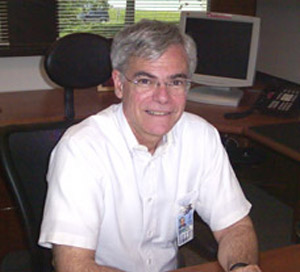Our Science – Gottesman Website
Michael M. Gottesman, M.D.
 |
|
|||||||||||||||||||||
Biography
Dr. Gottesman obtained his M.D. from Harvard University Medical School, completed his internship and residency in medicine at the Peter Bent Brigham Hospital in Boston, and received his postdoctoral research training in molecular genetics with Martin Gellert at the NIH. After a year as an assistant professor in the Department of Anatomy at Harvard, he moved to the NIH in 1976. He currently serves as the NIH deputy director for intramural research as well as chief of the Laboratory of Cell Biology.
Research
Success in treatment of some disseminated cancers with chemotherapy has led to intensified efforts to understand why many other cancers are intrinsically resistant to anticancer drugs or become resistant to chemotherapy after many rounds of treatment. Work in the Molecular Cell Genetics section has revealed that a major mechanism of resistance of cancer cells to natural product anticancer drugs such as Adriamycin, etoposide, vinblastine, actinomycin D, and Taxol is expression of an energy-dependent drug efflux pump, termed 'P-glycoprotein' (P-gp), or the multidrug transporter. This pump system contributes to drug resistance in about 50 percent of human cancers by preventing accumulation of powerful anticancer drugs in cancer cells. The sequence of the multidrug resistance (MDR1) cDNA, determined in our laboratory, has led to (1) a model of the transporter as a pump with 12 transmembrane domains and two ATP sites, and (2) the discovery of a related family of 48 human ABC transporters involved in a variety of essential transport processes in cells. At least two other ABC transporters have been shown to be responsible for multidrug resistance. Recent work using RT-PCR and microarray expression analysis has indicated that several other ABC transporters may contribute to drug resistance in cancer. Studies defining the function and mechanism of action of additional ABC transporters (ABCB5, ABCB6 and ABCC2) are in progress. In particular, ABCB5 and ABCC2 are expressed in melanomas known to be resistant to chemotherapy. While the studies on mechanism and function of P-gp and related ABC transporters will aid in the development of new chemotherapeutic regimens and the development of agents which reverse drug resistance, an alternative way to exploit information about the multidrug transporter is to use it to confer resistance on drug-sensitive tissues such as bone marrow in patients undergoing intensive chemotherapy. This approach has been modeled in transgenic mice in which expression of the MDR1 cDNA in bone marrow makes this bone marrow resistant to toxicity of natural product anticancer drugs, and in animal models, including the mouse and dog, using retroviral vectors to confer selective advantage to transplanted MDR1-transduced bone marrow in the presence of drugs such as Taxol. To improve efficiency of gene transfer of MDR1-based vectors, we have developed an in vitro packaging system to create SV40 pseudovirions which can transfer cDNAs up to 17 kb in length to most cells. This gene delivery system can also be used for delivery of genes directly to cancer cells for therapeutic purposes.
Ongoing projects in the laboratory are dedicated to elucidating other mechanisms of multidrug resistance in cancer cells. A model system for cross-resistance to cisplatin, methotrexate, and nucleotide analogs such as 5-fluorouracil (5-FU) has been developed in which accumulation of drugs in resistant cells is much reduced. These cells show reduced uptake of these compounds because the cell surface molecules responsible for this uptake are reduced in amount owing mainly to a protein trafficking defect, which results in their accumulation in cytoplasmic vesicles. Studies to determine the specific molecular defect in these cisplatin-resistant cells are in progress.
This page was last updated on 6/11/2008.

